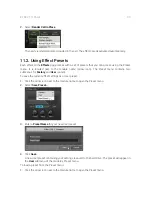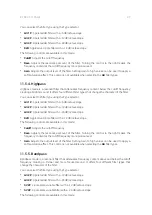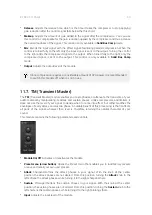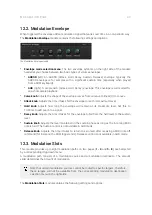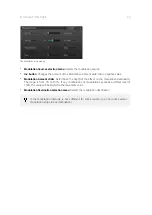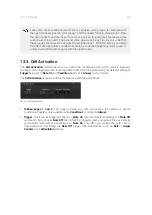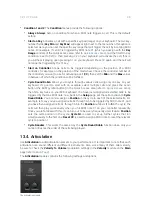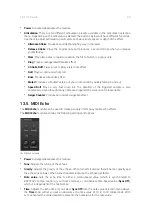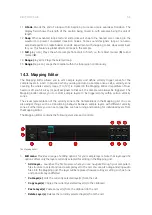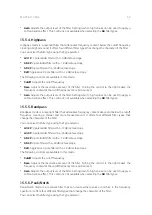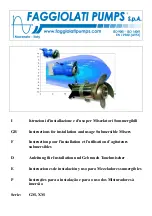
Take some hi-hat sounds and set them to exclusive voice groups, for example, with
the open hi-hat assigned to voice group 1 and the closed hi-hat to voice group 2. Now
the open hi-hat sound can be set to more voices, five, for example. This allows some
audio trails to be heard. The second voice group can be set to one voice. Both of
these groups should now be assigned to exclude group 1. With this setup, you obtain
the effect of trailing drum sounds while having a controlled polyphony (voice group 1),
and you can still mute that group with the closed hi-hat.
13.3. Cell Activation
The
Cell Activation
module allows you to determine conditions under which a cell is triggered.
Usually, a cell is triggered upon receiving a MIDI note, which is expressed by the default settings of
Trigger
being set to
Note On
, and
Condition
being set to
Always
in this module.
The
Cell Activation
module contains the following settings and options:
The Cell Activation module.
•
Tabbed pages 1 and 2
: The pages provide you with two menus for setting up nested
conditions. Page
2
is only available when
Condition 1
is not set to
Always
.
•
Trigger
: A cell can be triggered either by a
Note On
command (default setting) or a
Note Off
command. If you choose
Note Off
, the cell will be triggered when you release the key. Velocity
and duration will work the same way as
Note On
, only after you release the note. This is
important when combining the
Note Off
trigger with articulations such as
Roll
or
Geiger
Counter
in the
Articulation
module.
SETUP PAGE
47

